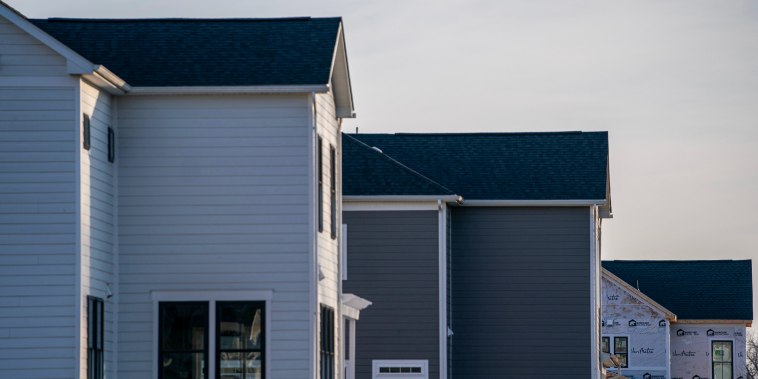Body:
In a continuously evolving economy, changes are incessant, bringing about new norms. Currently, a significant shift is taking place in the US housing market, marking a ‘new normal’ – the onset of a potential 7% mortgage rate era. This crosses a line that hasn’t been seen in roughly a decade, a line that changes the dynamics of buying, selling, and refinancing homes entirely.
The first facet to understand about this ‘new normal’ is what it entails. A 7% mortgage rate indicates an increase in the interest rate that banks charge to lend money for the purchase of a house. It’s a significant rise compared to the prevailing low mortgage rates we’ve seen over the past few years. A fluctuation like this typically brings new challenges and opportunities to navigate for both homebuyers and sellers.
For buyers, this increase may initially seem like a deterrent, primarily due to the rise in monthly payments and the total cost of a home. Assuming a 30-year fixed mortgage, a jump from a 4% to a 7% rate could, theoretically, add many thousands to the total repayment amount. Such a dramatic shift also means that potential homeowners will need a higher income to afford the same house they could’ve bought at a lower rate.
However, it’s not all bad news. A higher mortgage rate also means that lenders are more willing to loan out larger sums of money. This could make it possible for some buyers to afford houses in price ranges that were simply out of reach in a low-rate environment. Therefore, while a 7% mortgage rate might seem daunting, it could also open up new possibilities for those who can shoulder the added interest burdens.
On the flip side, for sellers, a higher mortgage rate might mean fewer buyers in the market, making it potentially more challenging to sell homes, especially those on the higher end of the price spectrum. However, sellers can opt to be proactive and make their properties more appealing through improvements and competitive pricing to appease potential buyers.
One key point that should be reemphasised is that, while this new normal might bring about some challenges, it’s not unprecedented. There were periods in the late 20th century where mortgage rates were even higher, sometimes upwards of 10%. Yet, the housing market did not collapse, but adapted and thrived.
The response to this ‘new normal’ should be one of practical adjustment, not panic. Financial advisers recommend that potential buyers ensure they have a solid understanding of how these changes impact them personally and how to manage them effectively. This could involve revising budgets, using mortgage calculators to determine monthly payments, and discussing financial strategies with trusted experts.
In additional, the ‘new normal’ in the housing market is likely to increase the popularity of adjustable-rate mortgages (ARMs) which can offer lower introductory rates and could be a viable alternative for some buyers, depending on their financial circumstances and willingness to expose themselves to the possibility of rate increase in the future.
The market’s shift to a 7% mortgage rate apprises us that change is indeed inevitable and reminds us that we’re capable of adapting to these new landscapes. It elucidates not only the cyclical nature of real estate markets but also the flexibility and resilience of the American economy. It’s a drastic change from the low-interest era we’ve become accustomed to, yet one that could provide unexpected opportunities alongside the perceived challenges.
